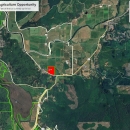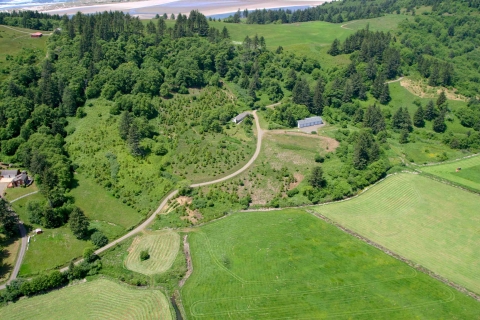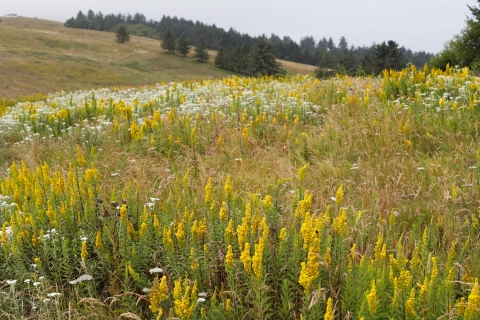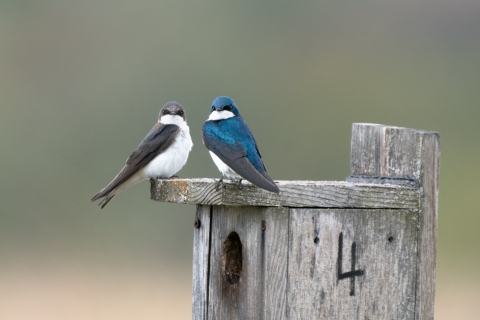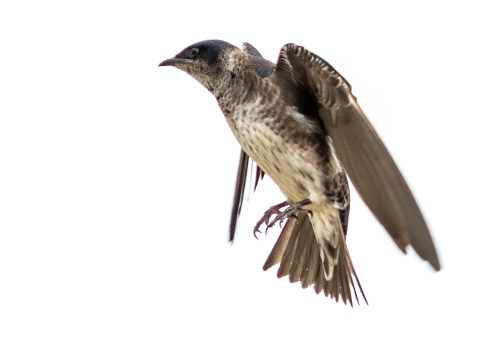What We Do
The U.S. Fish and Wildlife Service conserves and monitors plants and animals, manages and restores habitat, and provides outdoor recreation for the public at the nation’s more than 550 National Wildlife Refuges.
To help plants and wildlife, Oregon Coastal Complex Refuge staff use a variety of habitat management techniques to maintain, recover or enhance plant and wildlife values at our six National Wildlife Refuges coastwide. Staff carefully consider management techniques, employing those best-fit to the situation at hand. The varied approaches we take to benefit wildlife is commensurate with the array of species and habitats we're charged with protecting.
Management and Conservation
Refuges deploy a host of scientifically sound management tools to address biological challenges. These tools span active water management to wilderness character monitoring, all aimed at ensuring a balanced conservation approach to benefit both wildlife and people.
Comprehensive Conservation Plan
In accordance with the National Wildlife Refuge System Administration Act and the Wilderness Act, a Comprehensive Conservation Plan (CCP) was finalized for Nestucca Bay National Wildlife Refuge by the U.S. Fish and Wildlife Service's Oregon Coast National Wildlife Refuge Complex in 2012.
The purpose of the CCP is to map a vision of the refuges' future desired conditions, addressing issues of land protection, public use, types of habitat to be provided, partnership opportunities, and the management actions needed to achieve this vision. This CCP specifies a management direction for the Refuge for 15 years. Visit this website https://ecos.fws.gov/ServCat/DownloadFile/43899 to view the CCP for Nestucca Bay National Wildlife Refuge.
Our Services
If you are interested in any services (permits, passes, etc.) contact the Oregon Coast National Wildlife Refuge Complex.
Our Projects and Research
Pasture Management
At Nestucca Bay Refuge, an active pasture-management program focuses on providing short-grass habitat preferred by Dusky and Aleutian Cackling Geese during the winter months. Pasture management is currently accomplished through cooperative agreements with local dairy farmers to best manage the pastures and meet wildlife habitat objectives.
Refuge grasslands are grazed and mowed during the goose "off-season" (May-October) in order to maintain the grass-species composition/vegetation conditions that geese respond to during their use period (November-April). Other management practices at Nestucca Bay involve reforestation, restoration of riparian riparian
Definition of riparian habitat or riparian areas.
Learn more about riparian areas and coastal prairies, and removal of invasive plants.
Winter Goose Surveys
Six subspecies of white-cheeked geese winter at Nestucca Bay. The U.S. Fish and Wildlife Service established the Nestucca Bay National Wildlife Refuge in 1991, in part, to protect and enhance habitat for Dusky Canada and Aleutian Cackling Geese.
Dusky Canada Geese have experienced a drastic population decline since the 1964 Good Friday Earthquake in Alaska and
are listed as a species of concern by the USFWS. Things are looking up, however: The most recent total population estimate continues to show improvement.
Populations of Aleutian Cackling Geese declined early in the 20th century and the USFWS listed the species as federally endangered in 1967. The Aleutian Cackling Goose had recovered sufficiently and was officially delisted in 2001. Prior to being removed from the Endangered Species List, a management plan was developed that included specific conservation measures for the Semidi Islands sub-population.
Coastal Prairie Restoration on Cannery Hill
Less than one percent of Oregon’s coastal prairie remains. Its decline is attributed to fire suppression, establishment of invasive species invasive species
An invasive species is any plant or animal that has spread or been introduced into a new area where they are, or could, cause harm to the environment, economy, or human, animal, or plant health. Their unwelcome presence can destroy ecosystems and cost millions of dollars.
Learn more about invasive species , and land development for home sites and grazing. Consequently, populations of prairie-dependent species such as the threatened Oregon Silverspot Butterfly have become small and disjunct. The USFWS Coastal Program partners with the Nestucca Bay National Wildlife Refuge, and the Institute for Applied Ecology to convert pastures consisting of non-native species to native coastal grasses and forbs. This promotes plants required by the butterfly at Nestucca Bay.
NestWatch
NestWatch is a citizen-science project and nest-monitoring database run by the Cornell Lab of Ornithology. The program
teaches citizens across the United States about bird breeding biology by engaging them in collecting and submitting nest records. At Nestucca Bay NWR we provide up to 20 nest boxes throughout different open habitats of the refuge. Volunteers manage and monitor the boxes and record data including nest site location, habitat, species of bird using the box, and number of eggs, young, and fledglings. The data are gathered on official forms and entered into the national database. These observations are compiled with those of other participants in a continent-wide effort to better understand and manage the impacts of environmental change on bird populations. Tree and Violet-Green Swallows, Western Bluebirds and Chestnut-backed Chickadees are the most common birds using the boxes.
Purple Martin Monitoring
A similar project on the Refuge benefits Purple Martins, a large swallow species that commonly nests in human-made structures. Jack Hurt, a longtime USFWS volunteer and birder extraordinaire, built and installed a six-unit martin "house" at Nestucca Bay NWR in March 2014. The house succeeded in attracting several swallow species (Tree, Barn, Violet-green, and Cliff) that summer, including a handful of martins that subsequently claimed it as territory. Since that time more apartment style boxes have been erected on the refuge and now Purple Martins are using all of the available hollows.
Law Enforcement
The mission of the USFWS Law Enforcement division is to protect wildlife and plant resources through the effective enforcement of federal laws. By working with federal, state, tribal and foreign enforcement agencies and other conservation partners, we combat wildlife trafficking, help recover endangered species, conserve migratory birds, preserve wildlife habitat, safeguard fisheries, prevent the introduction and spread of invasive species invasive species
An invasive species is any plant or animal that has spread or been introduced into a new area where they are, or could, cause harm to the environment, economy, or human, animal, or plant health. Their unwelcome presence can destroy ecosystems and cost millions of dollars.
Learn more about invasive species , and promote international wildlife conservation.

